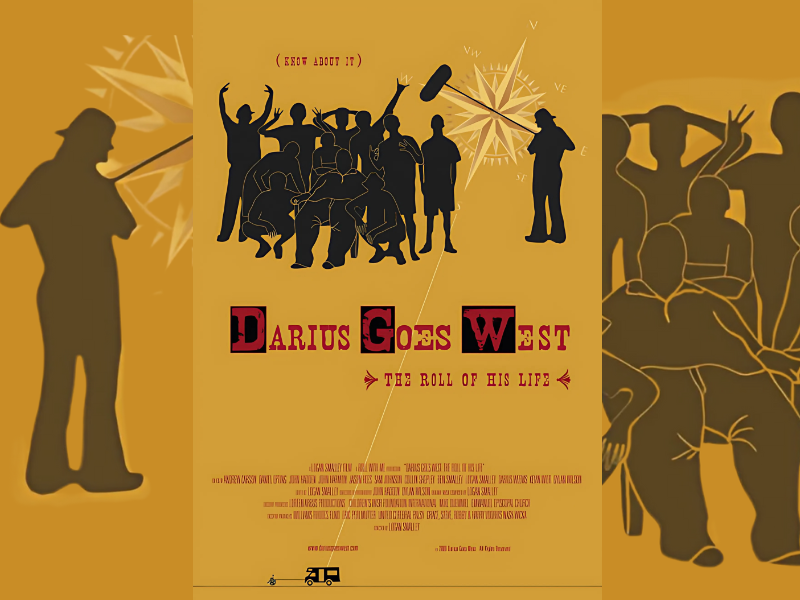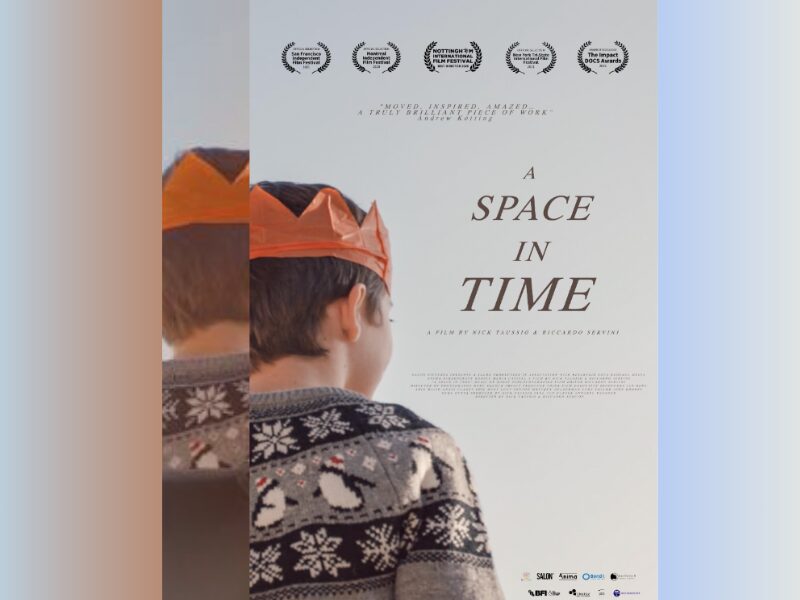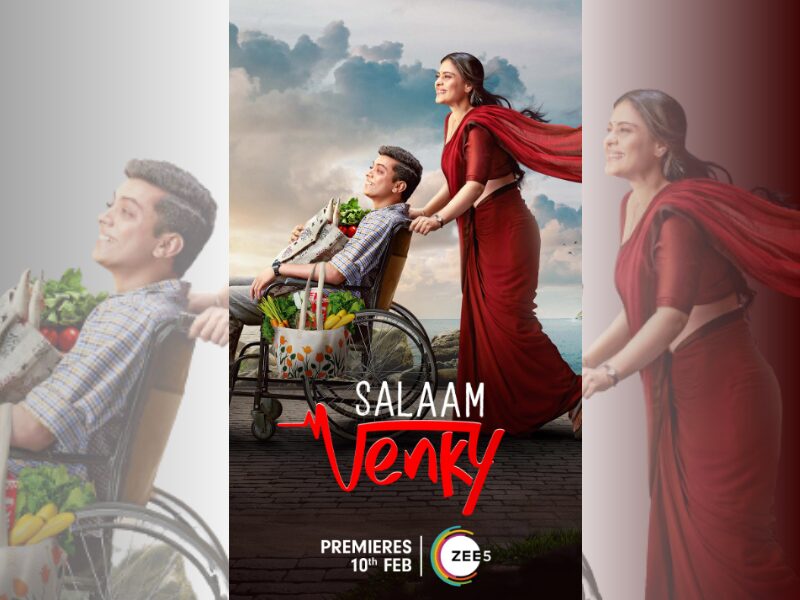Few things capture the human spirit’s resilience quite like the stories of surviving the odds. Cinema has a unique way of spinning narratives of struggle into inspiring rare tales. Here are 4 movies/documentaries that bring the rare and nearly unknown, Duchenne Muscular Dystrophy (DMD) to the limelight. There are only 3,500 to 5,000 male newborns worldwide who have DMD.
Although there is so much beyond textbook knowledge of genetics and medical research, we are ready to share perspectives on living with the rare medical condition for the patient, the family and the caregiver.
But before diving into these movies on muscular dystrophy, let’s take a quick look at the disorder –
For families seeking support through support groups and looking for the latest updates on whether Duchenne Muscular Dystrophy (DMD) can be cured, understanding the medical aspects of this condition and exploring how DMD affects the body are essential.
Table of Contents
What is Duchenne Muscular Dystrophy?
Duchenne Muscular Dystrophy (DMD) is a rare genetic disorder characterised by progressive muscle degeneration and weakness. It is caused by mutations in the dystrophin gene, which prevents the production of dystrophin, a protein crucial for muscle integrity.
DMD primarily affects boys, typically manifests in early childhood, and greatly affects the lifespan.
How can DMD be treated?
To enhance the quality of life for boys with DMD, researchers have developed innovative treatment options such as gene therapy (Elevidys) and exon-skipping therapy.
However, the costs associated with these treatments are extraordinarily high. Gene Therapy with Evelydis for DMD costs up to ₹29 crore ($3.2 million) per dose, making it one of the most expensive treatments available worldwide.
The best hospitals for DMD in India are expanding their treatment options. The availability of DMD drugs in India varies by region, and families often need to research multiple treatment centres to find the most suitable options.
This is just the tip of the iceberg, as we will delve deeper into – “How does DMD affect development?” and more about the condition while analyzing these movies on muscular dystrophy. So buckle up, because these films will hit you right in the feels and make you seriously rethink everything you know about resilience.
#1 Darius Goes West

Darius Goes West, is a documentary that’s part adventure, part life-changing journey. The 2007 muscular dystrophy film introduces us to Darius Weems, a 15-year-old with Duchenne Muscular Dystrophy (DMD), who embarks on a cross-country road trip with 11 of his friends with a clear goal to get his wheelchair customised on MTV’s hit show, Pimp My Ride. But it’s so much more than just a road trip.
Duchenne Muscular Dystrophy Difficulties
Having spent most of his life restricted in his hometown of Athens, Georgia, Darius hadn’t explored the world beyond. It is worth noting that Darius’s friends respect him for his grit, tenacity and happy-go-lucky attitude. They don’t pity him for his serious condition, they treat him like a total rock star.
Motivated to appear on ‘Pimp My Ride’ – a show where host Xzibit and his team transform vehicles into extraordinary creations, Darius saw this journey as an opportunity not just to achieve his goal but also to inspire others.
During his trip, Darius felt the gentle ocean breeze at Panama City Beach, Atlanta, the mystery of the bat caves in New Mexico, the grandeur of the Grand Canyon of Arizona and the thrill of flying in a hot air balloon in California!
Yes, he did all that in his wheelchair!
Most striking is the joy these guys bring to every moment. Darius isn’t defined by his condition, his incredible spirit defines him. His friends, demonstrate a kind of friendship that is a masterclass in human connection, empathy and acceptance.
The film is equal parts hilarious and heartbreaking. Some moments will have you laughing out loud, followed by scenes that make you reach for the tissue box. The plot is raw, it’s real, and it completely shatters the typical narrative of what living with a progressive muscle disorder looks like.
With the support of friends and family, even those with a fatal condition like Duchenne Muscular Dystrophy (DMD) can find a life full of laughter and happiness. The film is also a reminder that anyone can make an impact on how they lead their lives!
The Short Life Of Duchenne Muscular Dystrophy
Darius Weems sadly passed away in October 2016 due to cardiopulmonary failure, a complication of Duchenne muscular dystrophy. Darius became an incredible advocate for Duchenne Muscular Dystrophy (DMD) research. The documentary raised over $1.7 million for Duchenne muscular dystrophy research.
#2 The Fundamentals of Caring

Next, we have “The Fundamentals of Caring,” a heartwarming muscular dystrophy film that beautifully portrays the relationship between a caregiver and an 18-year-old teenager living with Duchenne Muscular Dystrophy. This film offers valuable insights into the daily difficulties of living with muscle-weakening conditions.
Trevor’s journey will help you understand how Duchenne Muscular Dystrophy (DMD) affects the body and the everyday challenges of a young Duchenne Muscular Dystrophy (DMD) patient, eager to experience life, but confined in his body, the only source of physical freedom- his wheelchair!
Challenges of Duchenne Muscular Dystrophy (DMD):
- Progressive Muscle Weakness
- Affects mobility, starting with difficulties in running, climbing stairs, and standing up.
- Eventually, this leads to a loss of walking ability by the teenage years.
- Respiratory Complications
- As the respiratory muscles weaken, breathing difficulties arise, often requiring ventilatory support as the condition advances.
- Cardiac Issues
- Duchenne Muscular Dystrophy (DMD) often affects the heart, leading to cardiomyopathy or heart rhythm abnormalities, which require ongoing monitoring and treatment.
- Fatigue and Pain
- Frequent fatigue and muscle pain can hinder participation in daily activities.
- Orthopaedic Issues
- Development of scoliosis (curvature of the spine) and joint contractures can lead to further physical discomfort and limitations.
Besides the challenges that come with Duchenne Muscular Dystrophy (DMD), the availability of drugs for its treatment has become another hurdle.
As of December 2024, the Duchenne muscular dystrophy drug availability in 2024 highlights stark contrasts between the United States and India.
Drug Availability for DMD in the United States of America
The Duchenne muscular dystrophy drug availability in 2024 in the U.S. has expanded significantly with several FDA-approved therapies:
- Exondys 51: Targets exon 51 skipping and benefits around 13% of Duchenne Muscular Dystrophy (DMD) patients.
- Vyondys 53: Suitable for exon 53 skipping, approved for about 8% of cases.
- Amondys 45: Focuses on exon 45 skipping.
- Elevidys: A gene therapy approved for broader age groups, providing a groundbreaking option for genetic intervention.
- Duvyzat: A nonsteroidal treatment approved for patients aged 6 and older.
These therapies represent a significant step forward in addressing the genetic basis of Duchenne Muscular Dystrophy (DMD).
Drug Availability for DMD in India
In contrast, the drug availability in 2024 in India remains limited due to economic, regulatory, and infrastructural barriers:
- Advanced therapies like Elevidys and Eteplirsen are not widely accessible due to regulatory hurdles and the cost, with treatments like Elevidys priced at $3.2 million (₹29 crores) per patient.
- Most patients rely on corticosteroids, such as prednisone and deflazacort, which help manage symptoms but do not address the disease’s genetic root cause.
The Indian government is trying to bring better treatment to India by investing in research and collaborating on medicines with other countries. But right now, the Duchenne muscular dystrophy drug availability remains a challenge.
Now coming back to the movie–
Paul Rudd plays Ben, a writer-turned-caregiver who takes on the challenge of caring for Trevor (Craig Roberts), a sharp-witted teenager with a fantastic sense of humour and an obsession with roadside attractions. The authentic portrayal of the caregiver-patient relationship, showing how proper care involves both physical support and emotional connection, makes the film special.
The movie brilliantly captures several aspects that resonate with the boys affected by Duchenne Muscular Dystrophy (DMD):
- The role of a protective mother, who loves her child unconditionally and can put her life on hold for him!
- A father, who tries hard, but cannot see his child goes through the everyday struggles of Duchenne Muscular Dystrophy (DMD).
- A child, who understands his parents’ pain, and recognises their efforts without any judgement but misses out on the highs and lows of an everyday teenager.
- A caregiver’s commitment to give the parents the respite they deserve because caregiving can be exhausting and a little rest is essential to prevent burn-out.
The film handles the practical aspects of caregiving. The ‘ALOHA’ method (Ask, Listen, Observe, Help, Ask Again) might seem simple, but it highlights the structured approach needed in providing care for individuals with muscle disorders. For Duchenne Muscular Dystrophy (DMD) families, this organised care approach is crucial for maintaining quality of life.
The great thing about “The Fundamentals of Caring” is its ability to balance serious themes with hope and humour. It tackles real challenges with Duchenne Muscular Dystrophy (DMD) patients – mobility issues and requiring assistance with daily activities, experiencing life, making friends, falling in love and tackling abandonment issues.
(A Shot from the film ‘The Fundamentals of Caring’)
Trevor’s character shows us that individuals with muscle disorders have the same dreams, desires, and capacity for humour and love as anyone else.
However, with changing caregivers, the patients may not get the kind of care they are looking for as they have to repeatedly explain their comforts/discomforts, and likes/dislikes to the new caregiver, leaving the patients uncooperative and sulky and family members stressed.
#3 A Space in Time

What happens when a documentary transcends the traditional narrative and becomes a lyrical masterpiece? It becomes A Space in Time. This documentary explores a family’s, resilience versus the harsh realities of Duchenne Muscular Dystrophy (DMD).
The documentary touches upon bigger questions of existence, limitations, and potential. It’s not just about DMD – it’s about how we define our lives, what it means to live fully, and how we find meaning despite overwhelming challenges.
How Duchenne Muscular Dystrophy Affects A Family
At the heart of A Space in Time is the Taussig family – Nick and Klara, parents to Duchenne boys, Theo and Oscar and their little brother Luca.. The family’s story is both heart-wrenching and inspiring, as they tackle the challenges of the incurable condition of their first and second-born.
For a little over a year, the family lived in a cabin till their home was built. They named their new home, ‘House for Theo and Oskar’. As the name suggests, the house was built to accommodate all of Theo and Oskar’s challenges, be it with moving with the wheelchair, an easily accessible wet room, a wider entrance and an additional room for a carer or guest, among other things.
The home for the beloved boys Theo and Oskar won the RIBA South East Award 2021 and the RIBA South East Small Project Award 2021. RIBA stands for Royal Institute of British Architects.
(A shot from the documentary ‘A Space in Time’)
Changes in Lifestyle Helps Managing Dystrophy
Theo was born in 2011 while Oskar came into the world 2.2 years later in 2013. Although Theo showed signs of delayed milestones in 2013, the problem became evident in 2014 when both Theo and Oskar were diagnosed with muscular dystrophy of the most serious kind, Duchenne.
One of the most touching aspects of the documentary is the Taussigs’ commitment to creating a home that will allow their children to thrive despite their condition. ‘House for Theo and Oskar’ was specifically designed with accessibility in mind, featuring wide hallways for wheelchair access and other modifications to make their life more manageable.
The home isn’t just a physical space, it’s a symbol of resilience and the desire to give Theo, and Oskar a full, happy life that their youngest sibling Luca, who was born without DMD.
A Glimpse into DMD From Parents’ Perspective
The beauty of A Space in Time is that it doesn’t present Theo and Oscar as patients but as normal kids living their lives courageously. The film captures their everyday moments, such as playing in the garden, getting ready for school, and sharing innocent curiosities, like when Theo asks if ice cream could cure Duchenne.
These simple moments emphasise that their condition may have stolen the best moments of childhood, but it couldn’t steal their child-like robustness and creativity.
What’s amazing is how the Taussigs address the reality of (DMD) to their sons. Nick openly talks to Theo and Oscar about their future, and the film doesn’t shy away from the harsh realities of their condition. By doing so, it invites the audience into an honest, raw exploration of life with Duchenne Muscular Dystrophy (DMD).
Glimpse into DMD through Another DMD Patient’s Eyes
Later in the documentary we meet 30-year-old Jon, a Duchenne man reliant on a ventilator. He offers guidance on what to expect as the boys grow older, and presents his wheelchair as a tool of independence, challenging the stigma that often surrounds people with DMD.
Can Duchenne Muscular Dystrophy (DMD) be cured?
Although there is much research and conversations around Duchenne Muscular Dystrophy, there is no evident cure for the condition yet.
The documentary reflects on the possibility of using bone marrow transplants as a solution. If and when that technology develops, Luca can be the bone marrow donor and Theo and Oscar will benefit from the treatment.
“A Space in Time” isn’t just a documentary about a family coping with Duchenne Muscular Dystrophy (DMD), it’s a powerful reminder to adapt to challenges in the face of adversity, and to find good solutions to rare problems like Duchenne Muscular Dystrophy.
#4 Salaam Venky

Salaam Venky, based on Shrikanth Murthyis’s book The Last Hurrah, follows the emotional journey of Venkatesh, fondly known as Venky (played by Vishal Jethwa), a young man who sadly died in 2004 while battling Duchenne Muscular Dystrophy (DMD), a rare and life-limiting condition.
This film highlights how DMD affect the development of a patient while also focusing on the availability of drugs for Duchenne Muscular Dystrophy (DMD) in India and how the process of accessing gene therapy is a significant concern for many families, like Venky’s.
Coping with Duchenne
Despite being in a wheelchair since he was 6, Venky lives life with incredible courage, a sharp sense of humour, and a love for chess and movies.
His mother, Sujata (played by Kajol), has been Venky’s support system throughout, sacrificing everything to give her son a full and meaningful life. The story captures the close bond between the 2, filled with moments of laughter, love, and pain as they face one challenge after another.
When Venky’s health deteriorates, he decides to make a difficult and controversial choice – he wants to opt for euthanasia (end life at will) so he can donate his organs while they are still viable.
It’s a selfless act, but one that puts his mother in an impossible position. Sujata finds herself torn between respecting her son’s last wish and holding on to him for as long as she can.
As Venky’s condition worsens, his fight for euthanasia becomes a legal battle. Though his plea is ultimately rejected, his story sparks debate and sheds light on the struggles faced by families of terminally ill patients. Venky’s dream of organ donation was pretty much unfulfilled apart from the donation of his eyes, as most of his other organs couldn’t be saved.
While the Andhra Pradesh High Court and doctors struggled with the difficult ethical questions around euthanasia, his organs gradually became infected and Venky left a lasting impact on those who heard his story.
While the documentary captures personal experiences, it’s worth noting that Duchenne Muscular Dystrophy (DMD) drugs in India and various treatment approaches continue to evolve.
The journey of finding affordable therapy for Duchenne Muscular Dystrophy (DMD) exon deletion while managing regular physiotherapy for Duchenne Muscular Dystrophy (DMD) patients in India is a common financial challenge along with Duchenne Muscular Dystrophy treatment options. Many families actively engage in fundraising for Duchenne Muscular Dystrophy (DMD) treatment as the cost of the treatment runs in crores in India.
Fundraising For Duchenne Muscular Dystrophy
This is where crowdfunding platforms like ImpactGuru come in and make fundraising for Duchenne Muscular Dystrophy (DMD) treatment a vital pathway for families to access life-changing treatment.
To sum it all up, these movies on muscular dystrophy show how strong and brave people can be, even when life is quite tough. From the fun adventures in Darius Goes West to the touching moments in Salaam Venky, we see how people with this disease don’t give up.
These films teach us a lot about never losing hope and how important family and friends are. Watching these stories helps us understand what it’s like for people with muscular dystrophy and reminds us that even when things are hard, we can still find joy and strength. It is important to remember to count our blessings and remain thankful and humble.
Salaam Venky
Duchenne Muscular Dystrophy












